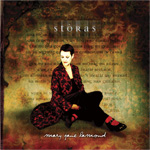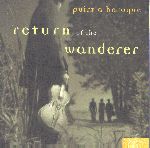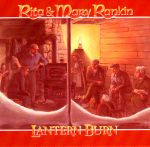
The Gaelic Music
of Cape Breton,
Nova Scotia

 |
The Gaelic Music
|

|
Updated: D ecember 4, 2006
|
There is a strong tradition of Gaelic speaking, singing and fiddling on Cape Breton Island. Although the language was dying out, there has been a recent revival of interest among many in the island in keeping this alive. The best-known proponent of Gaelic on the island is the remarkable singer Mary Jane Lamond. She has a true gift of being able to sing Gaelic songs in the original acoustic style, or energize them in rock arrangement that can fire up any crowd and its all great music. Here are some albums to get your started exploring this tradition. Interestingly, many Cape Breton fiddlers credit the particular rhythms of their playing to the rhtythms of the spoken Gaelic language. They argue that younger fiddlers who don't learn Gaelic will never get the sound and rhythm right. Fiddlers who are said to most embody this flavor include Alex Francis MacKay and Dave MacIsaac. |
|
Feis an Eilein - Còmhla
Cruínn - Gathered Together - A Cape Breton
Gaelic Celebration (CBC Radio 2002). This CD received an excellent
review in The Inverness Oran by
Frank Macdonald which I include in its entirety below: ...What accompanies the recorded voices is a sense of confidence in what they are
doing. Còmhla Cruinn is not a re-enactment of once upon a time;...it is a
vibrant rendering of what is in fact the Gaelic-speaking culture of Cape Breton
Island. ... Whether you speak the language or simply ache with longing to understand when the words and rhythms of a Gaelic song find their way into your heart, Còmhla Cruinn is a recording to treasure for its voices and its vision." (Essential purchase to understand the Gaelic influence on Cape Breton music.) |
|

|
Mary Jane Lamond - is an extraordinarily gifted singer whose talent, hard work and lovely voice would make her a star whatever she sings. She chooses to sing Gaelic songs from Cape Breton. It is her genius that allows her to transform these almost forgotten work songs into major radio hits in Canada due to the overwhelming drive, musicality, and great instincts of Mary Jane. Her song, "Sleeping Maggie" which apeared on Ashley MacIsaac's album become well known throughout Canada. Stòras (Turetlemusik 2005) "Stòras" means "jewel" in Gaelic. And Mary Jane has delivered yet another jewel. Not only is her voice in fine form, but she continues to bring her genius for arrangements to these songs. The album has a lovely mix of differing tempos, solo and group singing, working songs, upbeat contemporary arrangements, and fun mouth music expertly done. The result are songs that draw one in and haunt you, regardless of any language barrier. As usual, Mary Jane includes extensive liner notes that include the lyrics (in Gaelic) and history of the songs. I loaned this CD to a friend who likes Gaelic singing, and was able to get it back by buying them their own copy. (Highly recommended) Làn Dùil (1999
Universal Canada), her third album
shows Mary Jane's growing confidence as a brilliant arranger as well as singer.
As in her other two albums, all the songs are in Gaelic. The arrangements on
this album are a bit less rock-oriented than Suas e!, but not as
traditional as her first album, as there is a drum set, bass and a sprinkling
of accordions, Indian tabla and even an electric guitar on one track. Mary Jane
is ably accompanied by a variety of musicians including Wendy and Ashley
MacIsaac, and several Gaelic singers. The arrangements are varied and superb,
accenting rather than overpowering the songs, and helping communicate the
contemporary relevance of this music. The sound recording and mixing on this CD
are wonderful. |
|
|
Gaelic Gold from Cape Breton - (Various) |
|
|
The Rankin Family -- The Rankin Family - (1989) This amazing Cape Breton family of two brothers three sisters plus Howie Macdonald won four Junos (Canadian Grammys) and most other Canadian awards. With great voices, gorgeous harmony singing, and wonderful songwriting, their music covers a vast range from traditional Gaelic singing and fiddle playing to country. This, their first album, is the most traditional. The Rankins were not Gaelic speakers. However, their versions of the one or two Gaelic songs that appear on their albums are often worth wading through the country and pop songs even if the latter are not to your taste. |
 |
Puirt A Baroque -- Return of the Wanderer (1998, Marquis Classics) This is the third brilliant album from this Nova Scotian Baroque/traditional group that continues to shed insight and joy whenever they play. What is surprising to me is that they keep getting better and better! On this album, the trio has expanded with the welcome addition of Stephanie Conn who does 5 excellent songs in Gaelic and Scots. David Greenberg's always strong fiddling is terrific here, and there is fine work by David Sandall on harpsichord and Terry McKenna on guitar, lute and mandolin. The album contains the excellent liner notes we have come to expect from them. Very highly recommended |
 |
Rita and & Mary Rankin-- Lantern Burn (1994). These two sisters from Mabou Coal Mines have beautiful voices in both their English and Gaelic songs. Audio samples from their album available on their WWW site. |
What am I missing? Send me an e-mail: jim@sfcelticmusic.com
Back to Celtic Music Page Cape Breton Travel Page or Jim's Home Page